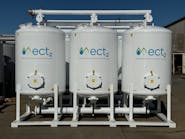Summer is graduation season. Colleges and high schools are honoring our newest members of the labor pool with grand ceremonies and pageantry befitting this transition. I recently had a chance to attend one such ceremony and could not help but be moved by its inspirational themes and optimistic tones.
At this ceremony, the speaker advised the audience of high school graduates that the world now expected three things from them: to advocate for themselves, to solve the problems that the speaker’s generation could not solve, and most importantly, to prepare the next generations to solve the problems that they will not be able to solve.
While the targeted audience likely found this advice to be somewhat daunting, I found it to be motivational — but not for the reason you might expect.
As an almost 30-year veteran of the industry, it would be easy to interpret this advice as a call to action for training the next generation. After all, who better to focus our attention on than those who have long careers ahead of them? Henry Ford famously assigned his hardest, most unsolvable challenges to his newest engineers. He was giving them the problems he could not solve.
While this approach makes sense, I’m not done solving problems yet. Wouldn’t it be even better to pass along an industry with fewer problems than to hope the next group figures them out? It’s time to leave our mark.
Our industry is at a crossroads and the challenges we face collectively are enormous. I personally spend a lot of time on supply chain issues, but appreciate that there are countless other areas of concern within our industry. While confronting these challenges, I have had opportunities to work with people, companies, and associations in ways I never have before — and it’s empowering.
As an industry we are talking more, collaborating better, and seeking deeper understandings of the roles we each play. This is at the very core of problem solving. Seeking the best solutions means challenging the status quo, questioning conventional wisdom, and learning from each other.
So, as we each attempt to solve the problems we have been assigned, I’d like to encourage out-of-the-box thinking. If a new salesperson walks through your door, listen to them: they may have a solution. If the next conference speaker is talking about a topic not currently on your radar, hang around: while their solution might not seem relevant to your present challenges, their approach could help identify a problem you didn’t even know you had. If an organization you are a member of seeks subcommittee participants, volunteer: solutions found within it could likely apply to your current challenges and make you better prepared to solve future problems that will inevitably come your way.
It would be easy to hope the next generation of waterworks professionals will solve today’s problems. No doubt many problems will persist beyond our careers. But let’s not kick the proverbial can down the road. Instead let’s run through the finish line; and when passing the torch, leave those inbound fresh faces with more answers than questions.
Einstein said, “We cannot solve our problems with the same thinking we used when we created them.” Perhaps he was preparing this generation. WW
Published in WaterWorld magazine, August 2022.



